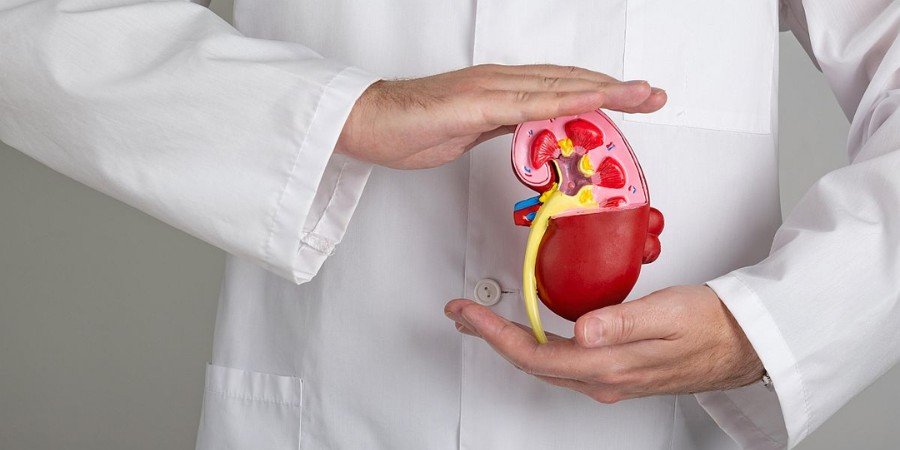Chronic Kidney Disease is a chronic condition where the kidneys slowly lose their function; if left untreated, it can develop into 5 stages of kidney disease. In the final stage, kidney failure may occur, but with dialysis, kidney function might be supported, and sometimes a kidney transplant can restore function. Consulting Dr Nisha Gaur can greatly improve CKD management. However, understanding the stages of CKD can help in managing the disease with the least complications.
What is Chronic Kidney Disease?
Chronic Kidney Disease (CKD) is a silent and gradual decline in kidney function where the kidneys progressively lose their ability to filter waste products and excess fluids from the blood. The human body relies heavily on the kidneys to maintain optimal health as they play a vital role in removing toxins, regulating blood pressure, and balancing essential minerals. If the kidneys fail to perform their tasks effectively, it accumulates waste and fluid within the body. This can cause several health complications such as heart disease, anaemia (low red blood cells), and bone-related disorders.
Chronic Kidney Disease is categorized into 5 stages of kidney disease, which are determined by how much kidney function remains. The Glomerular Filtration Rate (GFR) test is a key method for measuring the percentage of kidney function. This test calculates the rate at which blood flows through the kidneys to be filtered. Lower GFR values indicate poorer kidney function, and as the disease progresses through the 5 stages of kidney disease, the severity of symptoms and complications increases.
Individuals may experience mild or no noticeable symptoms in the early stages of CKD. However, as the condition advances to the later 5 stages of kidney disease, the kidneys struggle to remove waste, regulate fluids, and balance minerals, which significantly impacts overall health. Early detection and intervention are crucial to slowing the progression of CKD and managing its associated risks effectively. By understanding the stages and monitoring GFR values regularly, patients and healthcare providers can work together to manage the condition and prevent further decline in kidney function.
The 5 main Stages of Kidney Disease
Explanation of five stages
Stage 1: Normal or High GFR
The GFR remains within or above 90, while the kidneys remain normal. Still, other symptoms of kidney damage have already begun to occur. They may include protein in urine and blood in urine. Many patients are asymptomatic; however, the disease can sometimes be detected during a routine medical checkup.
Important Measures:
- Regularly monitoring the GFR.
- Hypertension and diabetes-type diseases should be kept in check.
- Follow a low-sodium diet with high fruit and vegetable content.
- Avoid Nephrotoxic drugs.
- Follow and adopt a healthy lifestyle.
Stage 2: GFR levels between 60-89
In this stage, the GFR declines to 60–89. The kidney function is mildly reduced, yet the symptoms are subtle or absent. This stage provides an alert to take active steps to avoid further deterioration.
Critical Risks:
- If it is unrecognized, it can advance into the more severe stages.
- Further Increases chances related to cardiovascular disease.
Important Measures:
- Collaborate with a doctor on the management of chronic diseases.
- Hydrate more, as it would help to preserve kidney function.
- Maintaining a fit and healthy body.
Stage 3: GFR is decreased to 30–59
During this stage, the patient might feel tiredness and swelling of the legs, and urination may also become altered. The stage is categorized into two phases, including:
Stage 3A: GFR between 45–59.
Stage 3B: GFR between 30–44.
Critical Risks:
- The chances of developing anaemia increase in this stage due to the reduced production of erythropoietin.
- Disrupted calcium-phosphorus balance increases the chances of bone disorder.
- Increased risk for hypertension and heart disease.
Key Actions:
- Consulting a nephrologist to create a care plan for the patient.
- Proper medication according to the doctor should be taken.
- Follow a dietary protein plan to reduce the tension in the kidneys.
Stage 4: Severe Decrease in GFR
In this stage, GFR goes down between 15–29. Serous damage occurs to Kidney function, and symptoms are much more observable. Patients started to feel nauseated, with loss of appetite, itchy skin, and unable to think clearly.
Critical risk:
- Severe electrolyte disturbances and potassium are at dangerous levels (Hyperkalemia).
- Fluid overloads lead to swelling of body parts and breathlessness.
- Increased in bone and mineral disorders.
Key Actions:
- Can use dialysis or renal transplant in the future.
- Maintain a restricted diet with a shortened potassium, phosphorus, and sodium intake.
- Stick strictly to prescribed medications.
- Monitor kidney function closely.
Stage 5: failure of kidney
This end stage occurs when the glomerular filtration rate (GFR) level drops below 15. The kidney’s effectiveness in filtering out waste is no longer, and Regular dialysis or a kidney transplant is the only solution left to survive for the patient. Nausea, muscle cramps, constant fatigue, and swelling-like symptoms become intense and severe.
Key Actions:
- Start dialysis to remove waste and fluids from the body.
- Evaluate the possibility of a kidney transplant.
- Consult for the mental condition during this stage to a psychologist.
Common Complications of CKD Progression.
CKD progression increases the risk of complications, which include:
- Cardiovascular disease: The general cause of mortality among individuals with CKD.
- Anaemia: Often present in later stages because of decreased production of erythropoietin.
- Bone disease: Reduced kidney function can disrupt the balance of calcium and phosphate, resulting in weakened bones.
- Electrolyte imbalance. Potassium, sodium, and phosphorus are some essential electrolytes which could be imbalanced with bad kidney function.
Prevention or Delaying CKD Progression
The following steps will significantly slow up the progression of CKD and improve quality of life:
- Control underlying disease: It is what assists in slowing CKD and is what helps in good diabetic, hypertension, and hyperlipidaemia control.
- Healthy diet: A diet that minimizes salts, proteins, and phosphate intake makes the disease liveable and reduces complications of the disease.
- Medications: Medications would include antihypertensives, reduction of proteinuria, and management of diabetes.
- Regular monitoring: Follow-up visits and haemoglobin tests monitor the deterioration of the kidneys and thus can mark changes early.
- Changes in lifestyle: Healthy weight, some physical activity, no smoking, and no alcoholic beverages maintain their health.
Conclusion
Chronic Kidney Disease (CKD) is considered a serious condition that progresses if not managed adequately. According to Dr. Nisha Gaur, the Best Nephrologist in Jaipur, understanding the stages of CKD is crucial for early detection and effective treatment. Early intervention can significantly slow the progression of CKD and prevent complications in patients.
Controlling risk factors such as elevated blood pressure and diabetes, while maintaining a healthy lifestyle and adhering to medical advice, can help individuals with CKD manage the disease effectively. As the Nephrologist in Jaipur, Dr. Nisha Gaur emphasizes the importance of regular monitoring and timely medical intervention. These measures not only improve the quality of life but also reduce the risk of kidney failure. With proper care and lifestyle adjustments, most individuals with CKD can lead healthy lives for many years.



